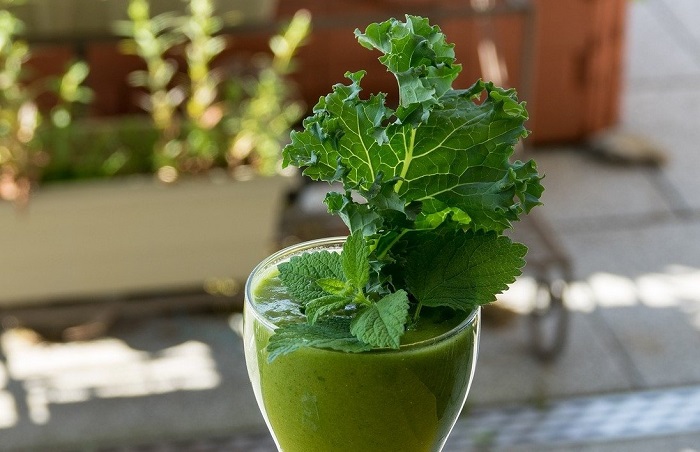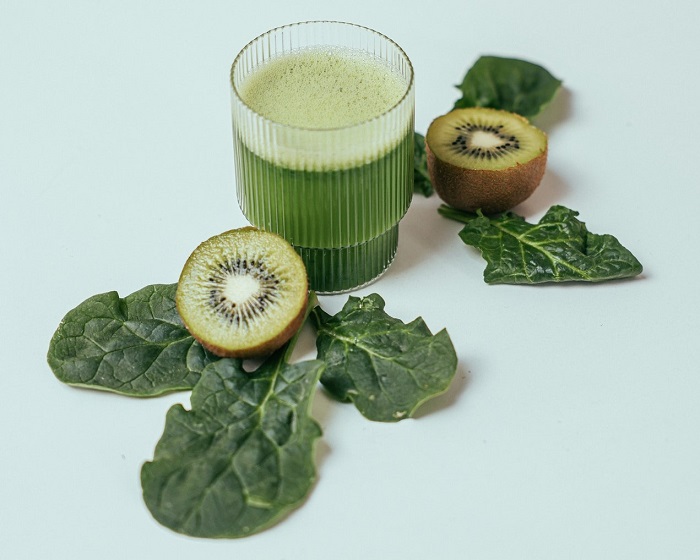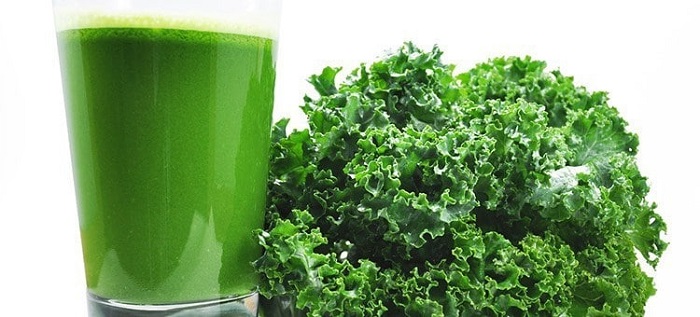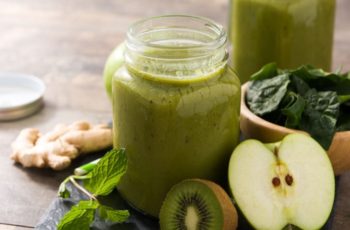Table of Contents
What is Benefits of Juicing Kale? Good Tips and Guides in 2021
Kale is one of the most popular vegetables on earth and for good reason. It’s packed with nutrients including calcium, vitamin C, iron and carotenoids. It also contains fiber which helps to lower cholesterol levels in the blood stream while helping you feel fuller longer. This article will give you What is Benefits of Juicing Kale and some great tips on how to juice kale.

1. What is Juicing Kale?
Juicing kale is the process of extracting the juice from a fresh raw bunch of kale. The leaves are typically used, but you can also use the stalks which add a unique flavor to each drink. Freshly harvested greens will provide the greatest taste and produce an excellent yield in your juices; however, it is possible to juice leftover greens as well, they just won’t be quite as flavorful when you do.
Since juicing is such a popular activity these days and green juices are so nutritious, you should have no problem finding kale at any grocery store or farmers market in your area.
2. Benefits Of Juicing Kale
Kale has been increasing in popularity over recent years due to its nutritional value and ease of preparation. This leafy green vegetable is an excellent source of vitamins C, A and K. It is also one of the best sources of calcium.
Juicing kale can be a great idea for your health; however, you should keep some things in mind before you run out to buy a juicer. One factor to consider is that while kale has several nutrients which promote good health, it does not provide any protein or carbohydrates which are needed by the body.
When juicing kale, in order to get proper nutrition from this leafy plant food, you will need to combine it with other items such as fresh fruits and vegetables or honey (or stevia). The best mixtures seem to include apple with either lemon or carrot added for flavor. By mixing together different items, you can get a balanced meal which will provide all the nutrients your body requires.
Kale is not only used in juices but can be steamed or sautéed as well. This green leafy vegetable has made its way onto many restaurant menus and into numerous home kitchens for good reason; it’s absolutely delicious! There are several ways to use kale for cooking purposes as well as preparing fresh homemade juice.
In fact, kale is one of those vegetables that is versatile enough to go with most dishes whether you’re looking to serve something light and healthy or hearty and filling. When combined with other foods such as quinoa, brown rice, beans or lentils, kale takes on a whole new flavor profile while still providing lots of nutrients.
3. Steps by Steps on How to make Juicing Kale.
The following steps on How to make Juicing Kale will help you create a healthy and fresh juice.
Preparation: Rinse kale well under running water, making sure to clean all the nooks and crannies of each leaf.
Cut off the bottom portion of the stem that may still be attached to any leaves at the bottom end of your bunch of kale. Dice up one apple (or whatever fruit you prefer) into small cubes. You should have about 4-5 cups worth. This will make for a sweet tasting drink as opposed to tart so if you like it sweeter than add more fruit! Toss in the diced apples along with 1/2 lemon or lime.
I do not use rind but this is up to you.
Cut the kale leaves in half lengthwise so they are easier to juice. You can use a knife or kitchen shears for this step. Toss all of your ingredients into a juicer and juice away! I suggest to alternate between harder veggies such as apples/carrots and then move onto softer greens like kale, spinach, parsley etc so that you don’t jam up your juicer.
Once finished with the kale/spinach you could go back with some cucumber and celery or anything else that would be on the hard side if alternating again.
It is recommended not to juice fruits with the kale, so this should be eaten separately. This is because fruit has a different digestive system within its body which breaks down at a faster rate than vegetables or greens. Fruits are higher in water content and usually (juicing) combines them with veggies, which will make it less nutritious in general.
Fruit also has natural sugars that are quickly absorbed into the blood stream which can raise blood sugar levels and lead to weight gain if consumed too often or in large quantities.
Tips and Guides on benefits of Juicing Kale?

Some Tips For Juicing Kale The best way to juice kale is to add it as the base of your drink, filling about 1/3 of your glass with it. Fill up enough so that you get a really good taste but not too much because then the flavor becomes a bit overwhelming for most people. You can mix in other fruit and veggies as well such as orange or apple to round out the flavor profile.
Once you’ve juiced your greens, you’re ready to enjoy! It’s always a good idea to store any leftover kale juices by pouring them into an ice tray and freezing them overnight. By doing this, you’ll end up with individual cubes which are perfect for popping into a glass when you need access to fresh juice!
All you have to do is take the ice tray out of the freezer in the morning and place it into your fridge for a few hours until all cubes are thawed, then enjoy!
Juicing Tips Kale requires delicate handling because its leaves tend to be rather tough. You need to make sure that you wash them thoroughly under running water before cutting in half lengthwise so they can easily fit through your juicer’s feed chute. This will also prevent any dirt from getting into your juice.
It also helps when using kitchen shears or a knife to cut off the bottom portion of the stem which may still be attached to any leaves at the bottom end of your bunch of kale. If not removed, this part tends to get stuck in the juicer and can jam it up.
1. How to choose good Kale?
Choose kale with vibrant color. Fresh leaves tend to be dark green in color, while older ones will have faded or yellowish shades. Avoid those that are wilting as this indicates they are already stale and not good for juicing anymore.
2. How to keep Kale fresh?
Kale can be stored in the refrigerator for about five days if you place them inside a plastic storage bag first before zippering it up. Leaving the stems attached can help extend its life span for a few more days so make sure to remove any extra pieces that may come off when cutting into half lengthwise later on.
3. Is Juicing Kale Healthy?
Kale is one of the most nutritious types of around and should definitely be included into your diet plan. It is high in fiber, calcium, potassium and Vitamin C. These nutrients provide a good source of anti-oxidants that can help protect our cells from damage and prevent diseases such as cancer and arthritis.
Many people are concerned about the bitter taste kale juice has but this shouldn’t deter you from adding it to your daily juice as long as the other ingredients are flavorful enough to cover up for it or you don’t mind drinking something a bit more tart than usual. You might want to try mixing kale with milder tasting vegetables such as cucumbers or celery for example so you get a better balance of flavors.
Benefits Kale Juice contains an abundant amount of antioxidant vitamin C and K which may help enhance the immune system and prevent cancer.
Kale is a good source of fiber which helps promote regularity, lower LDL cholesterol levels in the bloodstream and may also help reduce the risk of diabetes.
It’s rich content of vitamin A may help slow down aging while boosting our body’s ability to fight off infections like colds as well.
If you drink Kale juice on a daily basis it will ensure that your digestive tract gets enough vitamins and nutrients to function properly while strengthening your bones too.
Taking kale supplements can be an easy way to make sure you’re getting all the right nutrients needed for optimal health but bear in mind that juices tend to have a higher nutritional value than extracts so they should always be part of any healthy diet plan.
4. Juicing Kale Recipes
Kale Blueberry Blast
Ingredients: 6 leaves of kale, 2 cups blueberries (fresh or frozen), 1 apple (cored and quartered), 1-inch lemon wedge.
Method: Put everything through a juicer following the manufacturer’s instructions. Stir and serve right away.
Note: You can also replace the apple with two celery stalks if you prefer not to include this fruit in your mix.
Apple Kale Power Cocktail
Ingredients: 8 large kale leaves, 3 medium apples (cored), 2 ounces ginger root, 4 cups watermelon cubes.
Method: Prepare all ingredients then run them through a juicer following the manufacturer’s instructions for best results. Serve over ice if preferred.
Kale Smoothie
Ingredients: 1 bunch kale, 2 bananas, 1 orange (peeled), 3 cups strawberries.
Method: Prepare all ingredients then put everything except the strawberries into a blender and pulse several times until well mixed. Now add in the strawberries and continue to process for another 20-30 seconds or so just enough to break them down but not completely pureeing them to oblivion as that will ruin the consistency of your smoothie. Pour into tall glasses and serve immediately.
Kale Pineapple Storm
Ingredients: 8 leaves of kale, ¼ pineapple (cored), 1 orange (peeled), ½ cup cranberries.
Method: Put all ingredients through a juicer following the manufacturer’s instructions for best results. Stir before serving.
Note: You can also add a banana or another orange if you like.
5. How Much Kale is Too Much?
There are some pretty hefty nutritional properties in raw kale and that’s what makes it such an amazing ingredient for all sorts of recipes but there has been recent research identifying the potential negative side effects of overconsuming this food so make sure to limit yourself to no more than one cup per day at most.
Split into three separate servings as too much of it can leave traces of toxins inside your system making you feel generally unwell. In very rare cases these toxins may even cause liver damage if consumed in excess so always keep on eye on how much kale juice or smoothies you’re drinking to avoid any serious problems down the line.
Although kale is an excellent dietary choice for all around general health benefits, overdoing it can bring on additional problems you may not have even been aware of so make sure to keep these facts in mind when preparing your daily servings of Kale juice and smoothies.
6. Common mistakes when making Juicing Kale.
Some people may feel the need to add sugar or honey into their smoothies and juice recipes just as a way of sweetening them up but always bear in mind that this defeats the whole purpose so it’s much better to use fruits high in natural sugars such as apples, oranges and strawberries.
Another common problem is not drinking juices or smoothies made with leafy greens within an hour or two of being prepared. Make sure you take this into account because they’re highly perishable ingredients which can quickly go off if left at room temperature for too long.
Always try to begin your day by drinking fresh fruit or green vegetable juices in order to give your digestive system the jump start it needs for optimal performance while also ensuring you get enough vitamins and minerals into your system to last you through the day.
Don’t just focus on leafy greens either because you’ll find that adding a small selection of other vegetables into your smoothies and juices can help add flavor and improve consistency while also giving your body some extra nourishment.
Always make sure to use organic ingredients if possible because these are much healthier and free from any unwanted chemicals or pesticides which may be dangerous for your health when consumed in large amounts.
Remember, juicing kale is a great way of getting all those vital nutrients into your system but try not to overdo it or drink them too often as this could lead to problems further down the line so just limit yourself to no more than one cup per day with three smaller servings at most and always try to drink your juices or smoothies within a couple of hours at most.
Common question related with Benefits of Juicing Kale FAQs

1. What is the best blender for juicing kale?
Answer: There’s no right or wrong answer to this question, only what you prefer. A lot of people swear by centrifugal juicers as they’re very simple to use and require almost no preparation which makes them quick and easy. Other people say that masticating (or slow) juicers are the way forward because they extract more juices from ingredients due to having a lower speed.
Either one will get the job done so it ultimately comes down to personal preference and deciding which one you’ll be most comfortable with using in your own home.
2. What does kale juice taste like?
Answer: It can vary a fair bit but if you want your smoothies and juices tasting great then try blending in some other types of fruit such as apples, oranges and strawberries in order to give it a bit of sweetness. You can also add things like mint, ginger or lemon juice into your recipes for an extra kick which will help mask the taste of kale so you won’t even be able to tell it’s there at all.
3. Is juicing kale good for losing weight?
Answer: Absolutely! Kale is one of the healthiest foods on the planet and by drinking kale juice you’re giving your body a constant supply of vital nutrients while helping lose weight at the same time. It’s not uncommon to lose half a stone within just 2 weeks from doing this alone so try blending kale with some other ingredients such as fennel, carrots or cucumbers and see for yourself.
4. What are the side effects of juicing kale?
Answer: Juicing kale is perfectly safe if done correctly so long as you only drink one cup per day with a maximum of three smaller servings and always try to drink your juices or smoothies within an hour or two at most.
If you’re not sure how much or how often you should be drinking then speak to your doctor first just in case because some people may be more sensitive than others, especially those who suffer from diabetes, gallstones or kidney issues.
5. Can I juice kale stems?
Answer: Yes! The majority of leaves come away from their stalks very easily so there’s no need to worry about getting that wrong at all. The best thing to do is usually to hold the stalk in one hand while pulling down to get the leaf off because this will generally preserve more of its nutrients on the stem where they’re actually needed.
6. Can I juice kale leaves with a high oxalate content?
Answer: You can but it’s not recommended as you’ll find that there are better alternatives out there. If you really want to extract as much juice from your kale as possible then try doing so using something like a masticating juicer which is capable of squeezing out any remaining juices after finishing up with their regular function, or simply buy kale powder instead.
7. What happens if I eat too many raw potatoes?
Answer: There’s no need to be concerned here unless you plan on eating them every day for months at a time but even then it’s unlikely to make a healthy adult sick. Potatoes are perfectly safe for consumption as long as you don’t eat too many of them or eat them too often so try to limit yourself to one or two per week and come up with a combination of foods that will keep your stomach happy because eating only potatoes isn’t a very balanced diet in the slightest.
8. What is kale juice good for hair?
Answer: Just like juicing any other type of food, drinking kale juice has some benefits when it comes to your hair too which makes sense considering they’re both made from plant cells which means they’ll work together rather than against each other. It contains Omega-3 fatty acids, Vitamin A, B and C along with various different minerals and proteins which are great for your hair so as long as you’re not allergic to kale then you should be fine.
9. Is kale juice good for your liver?
Answer: Yes! Kale is a wonderful source of vitamins such as Vitamin A, B and C along with minerals like magnesium, iron and zinc all of which play their own specific role in keeping your liver healthy. It’s an alkalizing food that works wonders alongside detoxing in order to maintain optimal health so drinking it will provide plenty of benefits including getting rid of toxins, improving digestion and stabilizing blood sugar levels throughout the day.
10. How do I use kale in my smoothie?
Answer: All you need is about four leaves of fresh kale per one hundred grams worth of fruit or vegetables in your smoothie but feel free to experiment with other greens as well if you enjoy using them on their own already. It’s best to blend them up with some ice cubes first just like any other fruit or vegetable before drinking them and you can also add things like cinnamon, nutmeg or vanilla for an extra kick.
Conclusion
While there are many different types of fruits and vegetables out there, juicing is all about convenience for us busy people who need quick healthy snacks in order to stay focused at work or during our workouts. In this blog, we’ve provided a list of some great benefits of juicing kale. We also provide you with the top tips and guides on how to juice it so you can get started right away.
With these guidelines and tips, you should be able to feel more energized especially if your goal is weight loss! If you have any concern, just contact us or give common below, we will reply as soon as possible. Thank you for reading!
Read more:
Top 8 Best Celery Juicer Reviews in 2021
Top 8 Best Juicer for Cleanse Reviews in 2021

